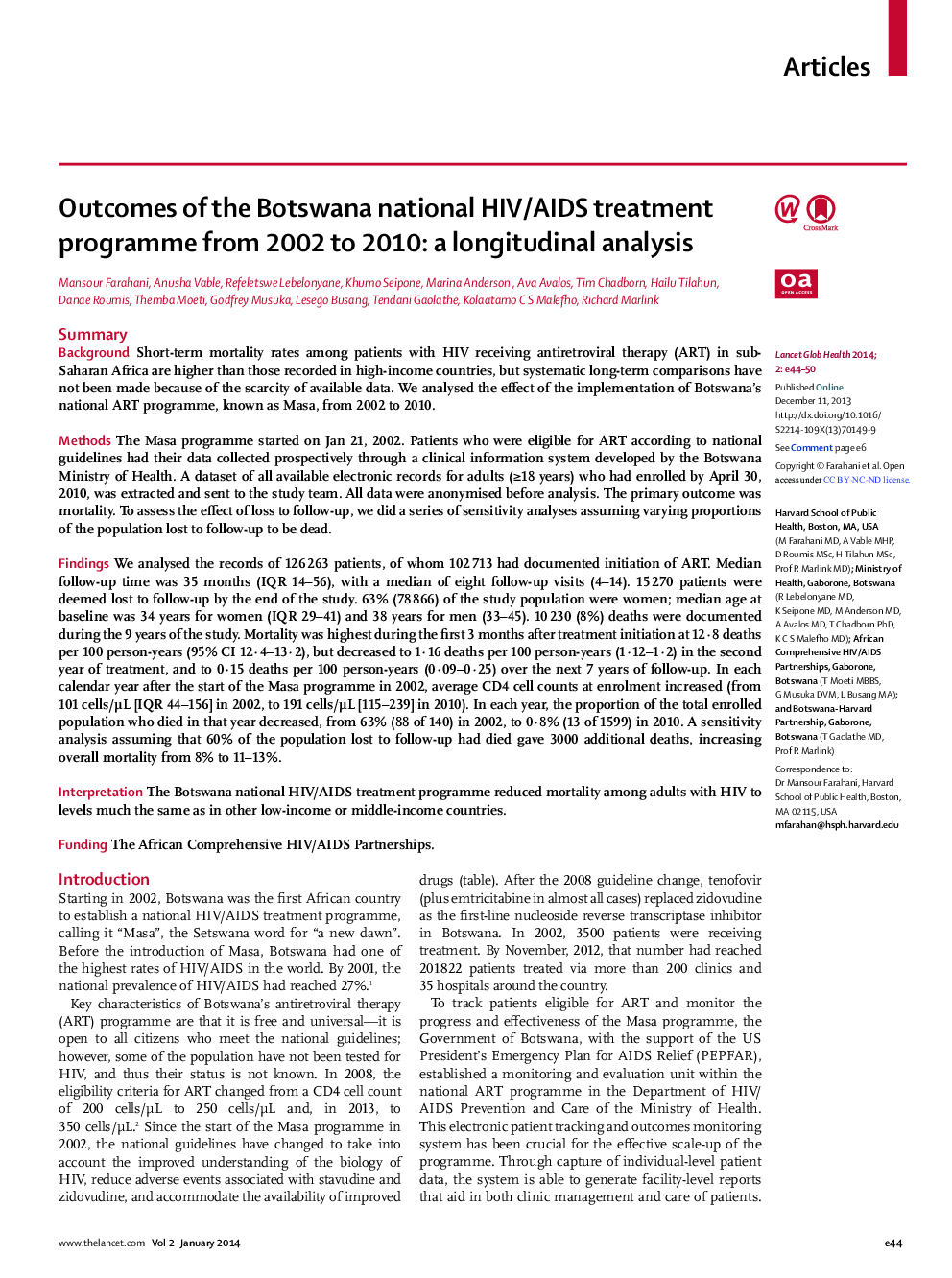| کد مقاله | کد نشریه | سال انتشار | مقاله انگلیسی | نسخه تمام متن |
|---|---|---|---|---|
| 3409179 | 1223987 | 2014 | 7 صفحه PDF | دانلود رایگان |
SummaryBackgroundShort-term mortality rates among patients with HIV receiving antiretroviral therapy (ART) in sub-Saharan Africa are higher than those recorded in high-income countries, but systematic long-term comparisons have not been made because of the scarcity of available data. We analysed the effect of the implementation of Botswana's national ART programme, known as Masa, from 2002 to 2010.MethodsThe Masa programme started on Jan 21, 2002. Patients who were eligible for ART according to national guidelines had their data collected prospectively through a clinical information system developed by the Botswana Ministry of Health. A dataset of all available electronic records for adults (≥18 years) who had enrolled by April 30, 2010, was extracted and sent to the study team. All data were anonymised before analysis. The primary outcome was mortality. To assess the effect of loss to follow-up, we did a series of sensitivity analyses assuming varying proportions of the population lost to follow-up to be dead.FindingsWe analysed the records of 126 263 patients, of whom 102 713 had documented initiation of ART. Median follow-up time was 35 months (IQR 14–56), with a median of eight follow-up visits (4–14). 15 270 patients were deemed lost to follow-up by the end of the study. 63% (78 866) of the study population were women; median age at baseline was 34 years for women (IQR 29–41) and 38 years for men (33–45). 10 230 (8%) deaths were documented during the 9 years of the study. Mortality was highest during the first 3 months after treatment initiation at 12·8 deaths per 100 person-years (95% CI 12·4–13·2), but decreased to 1·16 deaths per 100 person-years (1·12–1·2) in the second year of treatment, and to 0·15 deaths per 100 person-years (0·09–0·25) over the next 7 years of follow-up. In each calendar year after the start of the Masa programme in 2002, average CD4 cell counts at enrolment increased (from 101 cells/μL [IQR 44–156] in 2002, to 191 cells/μL [115–239] in 2010). In each year, the proportion of the total enrolled population who died in that year decreased, from 63% (88 of 140) in 2002, to 0·8% (13 of 1599) in 2010. A sensitivity analysis assuming that 60% of the population lost to follow-up had died gave 3000 additional deaths, increasing overall mortality from 8% to 11–13%.InterpretationThe Botswana national HIV/AIDS treatment programme reduced mortality among adults with HIV to levels much the same as in other low-income or middle-income countries.FundingThe African Comprehensive HIV/AIDS Partnerships.
Journal: The Lancet Global Health - Volume 2, Issue 1, January 2014, Pages e44–e50
